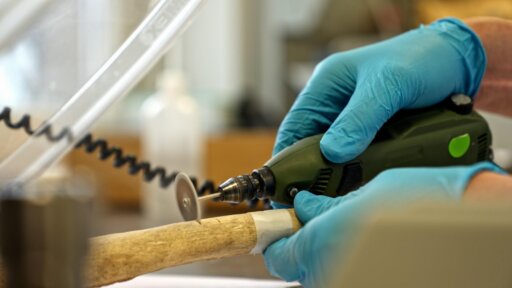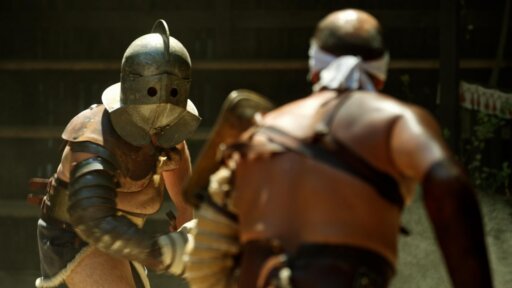While examining the first gladiator bones ever found, forensic anthropologist Fabian Kanz spots a small but unmistakable detail in a skull. Appearing to have healed, the scarring on the bone suggests some gladiators may have received the best medical care available to Ancient Romans. Contrary to popular belief, not all gladiators were prisoners or slaves forced to fight to the death. Some were free men who trained and conditioned as professional athletes to fight in the ultimate arena: the Colosseum.
Features



-For us, as humans, everything we do leaves traces in our skeleton.
♪♪ -Fabian and his team were called in to examine the remains of more than 60 bodies, found buried in a mass grave over 600 miles from the Colosseum, in a Roman cemetery in Ephesus, Turkey.
All but one turned out to be male.
-Then we start finding injuries.
It was just overwhelming how many injuries we found.
♪♪ There are just two options.
Maybe they have been soldiers.
Or they have been gladiators.
What is really impressive on this skull is a really massive sharp force wound, and there's kind of tearing, which means this must be caused by a barbed instrument.
-The only weapon that could have torn bones in this way was the barbed tip of a trident.
And only gladiators used tridents in combat -- never soldiers.
-There was a moment where we put all these clues together.
We have this group with just males in it.
We have this very high amount of healed and unhealed trauma.
This all together fitted very well that these are the remains of gladiators.
-These are the first gladiator bones ever found, let alone studied in this kind of detail.
-It makes it possible to prove what they ate, how they lived, how they trained.
So, it was just super exciting.
-Signs of damage to one of the skulls catch Fabian's eye.
He zooms in to inspect the wound more closely.
-This is the frontal bone of the skull.
And as you can see here, there's a massive sharp force trauma.
The chance to survive this is very low.
But you can see all the borders of the injury are smooth.
This means it was professionally treated -- all the little bone splints and everything picked out, therefore, it recovered nearly perfectly.
-It's evidence that this person was treated for a severe skull fracture and survived... proof that gladiators received sophisticated medical attention.
The most renowned physician in the Roman Empire, Galen, wrote about treating wounded gladiators in his city of Pergamon, in modern-day Turkey.
He claims to have saved all the men in his care.
-We know from the books that gladiators have the best medical treatment at the time, but now we have the physical evidence to prove this.
You May Also Like






